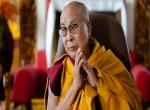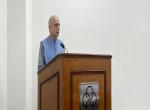The 2016-2017 Economic Survey of India (ESI), which was presented a day before the Union Budget was placed in Parliament, threw up the interesting idea of Universal Basic Income (UBI). It even gave the suggestion a swadeshi touch. An entire chapter titled, 'Universal Basic Income: A Conversation With and Within the Mahatma’, dealt with the subject. The report referred to the Father of the Nation and brought home the fact that it is the responsibility of the state to protect the interests of the poorest of the poor.
Referring to the UBI as a "radical and compelling" paradigm shift in thinking about both "social justice" and a "productive economy", the ESI emphasised on the need to reduce poverty, and advocated for its roll-out as an alternative to various social sector subsidy schemes. It said that "the UBI is, like any other right, “unconditional and universal" and that "the time has come to think of UBI for a number of reasons". It added, "The UBI is a powerful idea whose time, even if not ripe for implementation, is ripe for serious discussion." The ESI called for a practical, serious consideration and critical analyses of the costs, benefits and challenges ahead for the UBI to become a reality. It argues that given the costs attached, the UBI must not be seen in isolation as an alternative to the welfare schemes which have been successful, but as an integrating factor.
Since independence, remarkable progress has been achieved in bringing poverty levels — down from 70 per cent to 22 per cent in 2011-12. But the social security schemes have largely remained bogged down due to leakages and corruption which have ensured that the poor are often excluded from the intended beneficiary list. The initial barrier for the UBI to become a reality, the survey argues, are “implementation challenges”. However, it says, “the real opportunities afforded by the rapidly improving ‘JAM’ - Jan Dhan accounts, Aadhaar and Mobile; infrastructure, holds the prospects of improving upon the status quo”.
Rightly, a prerequisite for the UBI to be successful is to ensure financial inclusion for direct benefit transfers (DBT). The Jan Dhan accounts could ensure that the UBI is leakage-free as money would be transferred directly into the beneficiary’s account through automated systems. As per official records, Jan Dhan and Aadhar now have a wider presence in the country than earlier. There are 26.5 crore Jan Dhan accounts, which account for 21 per cent of the population across the country. Of these, 57 per cent are Aadhaar-linked. Also, Jan Dhan accounts are already being used for receiving subsidy benefits for cooking gas. The introduction of JAM will further strengthen this network.
The UBI idea is, however, not a new one. There have been quite a few policymakers who have been discussing it and writing about it at individual levels, bringing out different facets of the idea. Proponents who have voiced in support of UBI, include noted British economist Guy Standing and Indian economists Pranab Bardhan and Surjit Bhalla – they have strongly praised the idea of UBI. On the other hand, there are also critics, which includes French economist Thomas Piketty and others like Reetika Khera and Jayati Ghosh, who have expressed their reservations about the implementation of the UBI owing to the non-availability of a robust welfare architecture in the country. One such interesting take is provided by a Biju Janata Dal Lok Sabha MP from Odisha, Baijayant 'Jay' Panda, who, in an article in the Times of India titled, 'Cash To All Citizens: Universal Basic Income could actually Work Better in India than in Rich Countries’, opined that the UBI was a good idea and would also work better in developing countries like India. But he also expressed a note of caution saying that the thought be further explored. He argued that although there was a wide difference between the rationale, objectives and resources available in a developed and developing nation, the time was ripe for Indian politicians to start debating the UBI, irrespective of whether our instinct was to agree or disagree with such an idea.
Panda appeared to be slightly tilted towards the UBI in theory. However, he also had his reservations. Bringing out the difference between the ideas of a welfare state as it was in the 18th century, and the 21st century, he cautioned against the prospect of millions of jobs being eliminated by automation in this century, which is a reality. He said that while an Oxford University study estimates that "47 per cent of the jobs in the US are at risk of being automated in the next 20 years", to expect that a developing country like India would strive this phase of technological shift with determination, would be foolhardy. Panda's fear of automation, when seen in the Indian context, is a cause of concern. A World Bank report predicted that "automation threatens 69 per cent of the jobs in India" and that "technology could fundamentally disrupt the pattern of traditional economic path in developing countries". This will be an add-on to the already existing unemployment rate in the country which stands at around five per cent, according to the fifth annual employment-unemployment survey. Alarmingly, the report noted that almost 77 per cent of all households in India reported that they had no regular waged or salaried person. If this is the case, the UBI could enhance the problem. This, for two reasons: First, India is a country which is low on unemployment benefits and social security. Second, chances are ripe that most Indians will want to sit back at home as the grants coming from the UBI will be for free, in lieu of no work. It is also the case that many Indians would want to work because they have the skill which will lead them to get a job that will make them earn more than what is promised in the UBI. It’s also possible that the UBI might reinforce the idea of men spending high on liquor and bringing in the old-fashioned idea of women sitting at home.
However, Panda also argued that the roll-out of the UBI will be smoother in India as it would be easier to generate funds in a developing nation than in a developed nation. He said that generating funds in a developed country would "require brutal cuts to existing programmes that benefit the poor, while keeping in mind social sector expenditure". On the other hand, in India, "where the existing social sector spending is grossly inefficient, corruption-ridden, misdirected towards the better-off, it will be easier to achieve the stated objectives". Panda's assertions need to be taken seriously and there has to be a full-fledged discussion at the highest level of the Government.
Meanwhile, the Government has not clarified its position on the issue. Even as an entire chapter was dedicated to the UBI, Union Finance Minister Arun Jaitley remained silent on this subject in his Budget speech. This is understandable, given that little ground-work has been done on the issue and, therefore, it would have been premature of the Finance Minister to even suggest the UBI at this stage. In an interview after the Budget presentation, he did say, "The difficulty that I see is that India’s politics is yet to mature and in a politics which has not matured, you will have a kind of demand for continuing the existing set of subsidies and give universal basic income which is something which is not possible." This is a valid point. Whether the UBI will be beneficial or not is not the foremost challenge, especially in India, where we do not have a united, but a divided Opposition. The very first stumbling block for the Government, therefore, would be to overcome the political process in implementing the UBI.
For this, the Government has to create an atmosphere where Opposition leaders can come together, sit and discuss the idea of a UBI. However, if the opposition parties’ response the Government's recent demonetisation decision is anything to go by, it can be said that to expect our leaders to create a conducive atmosphere to debate the UBI, is ask for the moon. The maturity level to which Jaitley referred to was, that it will be difficult for our leaders to shift from the age-old practice of giving subsidies to the poor, (who in reality either remain at the mercy of venal officers to get their due or do not get their share) to the idea of giving a minimum sum to the poor on which they can count for basic access to goods so that they can live a life of dignity. Reaching a political consensus to debate on a given topic is, in itself, an uphill task.
The idea behind an unconditional UBI is that a monthly income should be paid to every deserving citizen of this country, as an entitlement and not in lieu of work. The purpose, as the ESI cites, is to reduce poverty and joblessness while seeking a replacement to various subsidies as they exist today. The suggestion is to give the citizens a minimum sum which can act as a safety net in times when they face financial crisis and to also avoid the poverty trap. Undoubtedly, the UBI will be beneficial for people who have been victims of dysfunctional subsidies which have just remained on paper. The problem with such anti-poverty schemes — which provide subsidised fuel, food, gas, electricity — is that they have remained inefficient and corrupt. While sufficient funds are allotted by the Union Government, leakages at various levels prevent the benefits flow to the poor. The leakage rate of India’s public distribution system has been estimated at an unacceptable high level of 40 per cent!
According to a recent estimate, around one-third of the grain set aside for India’s food-welfare programme, never reached the intended beneficiaries in 2012, the most recent year for which comprehensive data are available. Additionally, payments under a giant rural-work programme were regularly delayed, which left the families in the lurch. Prime Minister Narendra Modi’s Government has tried to patch up the system, largely by moving toward reimbursing the poor on their purchases of basic goods, with money paid directly into their bank accounts and also by increasing allocations. In a major boost to schemes like the Mahatma Gandhi National Rural Employment Guarantee Scheme (MGNREGS), the Union Government made the highest ever allocation of Rs 48,000 crore for 2017-18. The fact of the matter is that with over 950 centrally-administered welfare programmes, the many indignities attached with the poor had been the country’s thicket of welfare programmes.
The following figures speak for themselves: Despite spending a large amount of Rs 2.5 lakh crore in subsidies during 2016-17, there has been no ‘transformational impact’ on the standard of living of the masses. The largest chunk of Rs 1.34 lakh crore was estimated as food subsidy for the year, while Rs 70,000 crore was the estimated subsidy for fertilisers. Petroleum products accounted for another Rs 26,947 crore, which included Rs 19,802.79 crore for subsidy on LPG and Rs 7,144.21 crore for kerosene subsidy.
The nomenclature, ‘universal', in the UBI is misleading, though, because it seeks to target just about 45 per cent of the Indian population. With a population of 1.22 billion, there are about 270 million persons below the poverty line as of 2011-12, as per the latest Government data, which comprises 216.5 million rural poor and 52.8 million urban poor. The survey's prediction of a fall of poverty line to 0.5 per cent at the cost of about four to five per cent GDP is based on the assumption that the UBI will not be a universal dole but a targeted income scheme. The notion of 'universality' should instead aim to reduce bureaucratic negligence and prevent leakages which happens when discriminatory groups becomes dependent on the executive for benefits. It's a different matter that, defining BPL has remained a bone of contention. The task of differentiating between those who are and who aren't in need of assistance is a messy affair. India’s first poverty line was generated in the 1970’s, when the then Planning Commission defined it on the basis of minimum daily requirement of 2,400 and 2,100 calories for an adult in rural and urban areas. Subsequently, keeping in line with emerging times, attempts were made to give it a more realistic touch. In view of increasing requirements on account of changing times, some modifications were made. Two committees attempted to give a better definition to poverty.
In a first, in 2009, the Suresh Tendulkar Committee, under the UPA Government, attempted to better estimate India's poverty line by fixing a standard daily per capita spending of Rs 27 in rural areas and Rs 33 in urban. The committee arrived at a cut-off of 22 per cent of the population below poverty line. The Tendulkar panel's results enraged many, including activists, politicians and economist for its flawed methodology to fix poverty lines. Critics argued that the numbers were unrealistic and too low as not only had the committee under-estimated the expenses on health and education but had also brought down the minimum calorie norms. The UPA Government was, therefore, forced to appoint another committee to re-estimate poverty figures. In 2014, the C Rangarajan Committee was given the task to come up with fresh figures. Discarding the Tendulkar committee's methodology, it raised the limit to Rs 32 and Rs 47 for rural and urban areas respectively. It worked out poverty line at close to 30 per cent - this was much closer to global standards. However, this was not enough to tone down the critics and was subsequently turned down by the NDA Government which was then in Opposition.
Since then, many Government, non-Government and private organisations have attempted at giving a meaningful definition to poverty lines using different methodologies. But none was satisfactory enough. The current NDA Government constituted a 14-member task force under NITI Aayog Vice Chairman Arvind Panagariya to come out with recommendations for a realistic poverty line, which submitted its report last year. Nevertheless, assuming that some acceptable definition will be found for the BPL, the fact remains that the UBI will not remain ‘universal’ but targeted.
There are various reasons why India cannot perhaps afford a UBI at this stage. First of these is fiscal affordability. Based on poverty estimates for 2014-15, economists have proposed an annual payment of between Rs 3,500 and Rs 10,000 per person. This amounts to a total of 3.5 per cent to 10 per cent of the gross domestic product (GDP). Of this, non-merit subsidies (which includes fuel and fertiliser subsidies as well as water electricity and rail fare) account for about eight per cent of the GDP. Moreover, in the top 11 schemes, which includes the public distribution system, the urea subsidy and the MGNREGS account for about 50 per cent of the total allocation in the Budget. Generation of funds remain a major obstacle. There are divided opinions on this, with some suggesting that it can comfortably be absorbed in the budget by ending the non-merit subsidies and tax exemptions that mostly benefit the rich.
The second reason is implementation. A major failure of the plethora of schemes rolled out in the country has always been that while they have been good in intent, they have fallen prey to various implementational challenges. The very first challenge for the UBI, therefore, as feared by many economists and the ESI too, is the risk that instead of being a replacement to the current anti-poverty and anti-social programmes, it would land up as an add-on to the existing subsidy-based welfare schemes. This would then make it unaffordable fiscally. While noted economists have argued for a phased out implementation of the UBI, the Government also needs to ensure adequate machinery for its implementation. Centre-State negotiation with regards to the sharing of funds for UBI will hold key.
The third reason is technological. Precisely, the very premise of the UBI is technology in the sense of widespread banking and connectivity, as well as digital infrastructure to ensure that money is easily transferred the beneficiaries Jan Dhan bank accounts. This requires not only extensive coverage, but also standardised facilities.
The fourth reason is political feasibility. While the Government is more than willing to explore the UBI idea, whether our across-the-board politicians express the same open-mindedness, is doubtful. This, especially since major financing schemes involve elimination of existing benefits to some powerful interest groups.
The UBI is noble in intent. While we are talking about it, there are also other countries who have been trying it out. Among the developed countries, Switzerland became the first country to vote on the UBI, and recently rejected it through a referendum. On the other hand, in Finland, the UBI is being explored as a pilot project. The 2,000 unemployed people of the country are beneficiaries to 560 euros (or $480) each month for two years. The Finnish Government is more than confident that this step will improve the quality of life, reduce employment and create more jobs.
India, therefore, is in a unique position. It has its own experts. It can learn from both the churning happening in this country and also from the experience of other countries. The choice is before our policymakers: If they want to adopt the UBI, they will have to manage the bottlenecks; If they can effectively revamp the subsidy sector, schemes, check leakages etc., the need for a UBI may not even arise.
(The writer is a journalist with an interest in social welfare issues)
Published Date: 23th March 2017, Image Source: http://blog.microsave.net










Post new comment